Rob Bignell's Blog, page 376
April 5, 2013
Market your book by spinning it for a holiday
When promoting your book, you always should have a website, send out press releases to bloggers and mainstream media, and arrange book readings/signings to ensure the title is properly promoted. But those aren’t the only things you can do. In fact, they may not be enough. One marketing effort you might want to consider is spinning it for an upcoming holiday.
promoting your book, you always should have a website, send out press releases to bloggers and mainstream media, and arrange book readings/signings to ensure the title is properly promoted. But those aren’t the only things you can do. In fact, they may not be enough. One marketing effort you might want to consider is spinning it for an upcoming holiday.
Just because your book was released months ago doesn’t mean you can’t promote it again in the media. For example, if your book is about relationships, why not write a new press release for Valentine’s Day? If your book is about outdoors activities with children, why not stress the importance of them between dads and their kids for Father’s Day? Even New Year’s Day offers an opportunity; if your book is about dieting, why not market is as the “The Must-Have Guide to Staying Thin in 2014”? Target mainstream media and bloggers that ignored your first press release.
Need an editor? Having your book, business document or academic paper proofread or edited before submitting it can prove invaluable. In an economic climate where you face heavy competition, your writing needs a second eye to give you the edge. I can provide that second eye.
Related articles
 Why you want reviews written about your book
Why you want reviews written about your book Where to find reviewers for your book
Where to find reviewers for your book Market your book with endorsements
Market your book with endorsements Write a winning blurb for your book's back cover
Write a winning blurb for your book's back cover
April 4, 2013
How to determine your book’s price
One of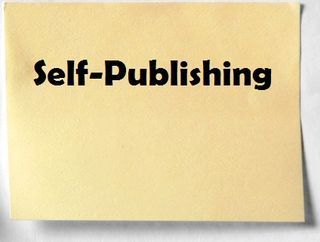 the key factors in determining a product’s success is its cost. Price something too high and no one will buy it; price it too low and you lose potential profits. Usually large corporations conduct extensive market research to determine the optimal cost, and book publishers are no different. You’re not a large corporation or book publisher, however, so how do you determine how much to sell your book for?
the key factors in determining a product’s success is its cost. Price something too high and no one will buy it; price it too low and you lose potential profits. Usually large corporations conduct extensive market research to determine the optimal cost, and book publishers are no different. You’re not a large corporation or book publisher, however, so how do you determine how much to sell your book for?
If that’s not enough, you really have to determine the price for at least three or more products – your paperback, your ebook, and those products sold overseas or on other platforms.
Part of your problem is solved in that all self-publishing companies set a minimum price that you must sell your book for. This price ensures that the cost of printing the book is covered and that the self-publishing company makes a little profit off it. The price usually also builds in a small royalty for you.
If you want to increase your royalty, then you typically can put a higher price tag on the book. But how high is too high?
The best bet is to head to a bookstore or go online to Amazon.com’s estore for its paper books and Kindle ebooks and let the mainstream publishers’ market research work for you. Do some comparison “pricing” and see what other books like yours – in page numbers, dimensions (width and height), cover quality (hard or paper), topic matter, photo quality (color or black and white) – are running. Don’t set your book at a higher cost than what’s being sold.
In fact, give serious consideration to undercutting your competition by setting the price at a slightly lower amount. For example, I discovered that paper books similar to my hiking guidebook “Hikes with Tykes” generally cost $14.99 to $16.99. I decided that a dollar less than the lowest priced competing book was a good market strategy and so set the price at $13.99. Since I was new to the field and competing against books with Fodor, National Geographic, and Sierra Club labels on them, the dollar off hopefully is swaying readers to pick up my book instead of competitors’.
With ebooks, there’s often a temptation among authors to give away the book for free. This is fine as a temporary promotion if you have other books for sale. The goal in doing so is to convince readers that you’re a good writer with a good product so that they’ll pay for your other books. To that end, I offer my first “Hikes with Tykes” guidebook for free on the Kindle Lending program, hoping that it’ll drive readers to pick up my other guidebooks in that series. But other than such efforts to build readership, why mark it as free? By doing so, you’re really telling readers that your writing is so bad that it must be given away.
Need an editor? Having your book, business document or academic paper proofread or edited before submitting it can prove invaluable. In an economic climate where you face heavy competition, your writing needs a second eye to give you the edge. I can provide that second eye.
Related articles
 Write a winning blurb for your book's back cover
Write a winning blurb for your book's back cover '7 Minutes a Day' now available in paperback!
'7 Minutes a Day' now available in paperback! Basic guidelines for self-publishing ebooks
Basic guidelines for self-publishing ebooks
April 3, 2013
Don't miss the mark: Your vs. you’re
Want  your writing to be free from this error?
your writing to be free from this error?
“Your” is a possessive form of “you”, as in Did you remember to bring your ray gun?
“You’re” is a contraction for “you are,” as in You’re one ace shot with that ray gun, Johnny!
You’re going to get this right from now on, aren’t you?
Need an editor? Having your book, business document or academic paper proofread or edited before submitting it can prove invaluable. In an economic climate where you face heavy competition, your writing needs a second eye to give you the edge. I can provide that second eye.
Related articles
 Get it right: Its vs. it's
Get it right: Its vs. it's When to use affect vs. effect
When to use affect vs. effect Nothing to joke about: Blonde vs. blond
Nothing to joke about: Blonde vs. blond Get in gear with backup vs. back up vs. back-up
Get in gear with backup vs. back up vs. back-up '7 Minutes a Day' now available in paperback!
'7 Minutes a Day' now available in paperback!
April 2, 2013
How do you create a unique writing ‘style’?
Every author writes in a certain "style." Style is the choice of vocabulary and phrasing to create an effect that runs through the entire story.
writes in a certain "style." Style is the choice of vocabulary and phrasing to create an effect that runs through the entire story.
Consider this snippet from Arthur C. Clarke's short story "The Awakening":
Marlan was bored with the ultimate bordeom that only Utopia can supply. He stood before the great window and stared down at the scuddling clouds, driven by the the gale that was racing past the foothills of the city. Sometimes, through a rent in the billowing white blanket, he could catch a glimpse of lakes and forests and the winding ribbon of the river that flowed through the empty land he now so seldom troubled to visit.
Now compare it to this sample from Joe Haldeman's "Angel of Light":
It began innocently enough. Christmastime and no money. I went down into the cellar and searched deeply for something to give the children. Something they wouldn't have already found during their hajjes down there.
Both pieces make use of different stylistic techniques to creat a certain impression. Clark uses full sentences describing a panoramic scene and repeats words to give a sense of the sweeping ennui facing not only his main character but all of humanity. Haldeman, however, uses short, incomplete sentences to establish the slightly desperate nature of the everyday main character, who is having a conversation with you.
On one level, each author’s style is unique because the words are a product of his own, unique mind. But even a lone author can create vastly different works by changing styles. Pick up a copy of Harlan Ellison's short story collection and compare the abstract "Repent, Harlequin!” said the Ticktockman" to his more conversational (but no less symbolic) "Jeffty is Five".
There are some basic guidelines for style that can help elevate the author from crude apprentice to respected craftsman. For example, varying in sentence lengths, using active rather than passive voice and avoiding cliches all make one's writing better. Recognizing these issues is important because style can be the difference between getting published or receiving a rejection letter. During future entries about style, we'll discuss those and other topics.
Need an editor? Having your book, business document or academic paper proofread or edited before submitting it can prove invaluable. In an economic climate where you face heavy competition, your writing needs a second eye to give you the edge. I can provide that second eye.
Related articles
 Improve writing's texture by avoiding repetition
Improve writing's texture by avoiding repetition Five great quotations about writing style
Five great quotations about writing style
April 1, 2013
Use Man vs. God(s) conflict to heighten tension
One type 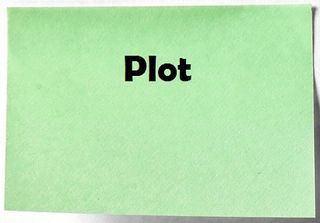 of conflict your characters could engage in is against God or the gods. In this conflict, the main character opposes a supernatural being that claims to be (or even is) the creator of everything.
of conflict your characters could engage in is against God or the gods. In this conflict, the main character opposes a supernatural being that claims to be (or even is) the creator of everything.
Such conflicts were common in ancient literature when gods were believed to play a greater role in the day-to-day life. Often the gods tested the main character or the story’s protagonist challenged them to benefit humanity. One of the most popular of such stories is the myth of Prometheus, who stole fire from the gods and against their express wishes gave it to mankind.
Science fiction stories often pit characters against false gods. “Star Trek: The Original Series” is fond of this theme, with Captain Kirk traveling to alien planets and overthrowing an oppressive false god, which usually turns out to be a computer or machine. This most notably occurs in the episodes “The Return of the Archons” and “The Apple.”
Today’s treatment of man vs. God in stories typically is a type of man vs. himself conflict. The main character doesn’t face off against God per se but undergoes an internal struggle in which his faith in God or belief in holy works is questioned. Sometimes this occurs because of contact with alien beings. This occurs in James Blish’s “A Case of Conscience” when a Jesuit priest investigates an alien race with no concept of God or original sin.
Need an editor? Having your book, business document or academic paper proofread or edited before submitting it can prove invaluable. In an economic climate where you face heavy competition, your writing needs a second eye to give you the edge. I can provide that second eye.
Related articles
 Conflict: The heart of every story
Conflict: The heart of every story Story more profound with man vs. himself conflict
Story more profound with man vs. himself conflict Incorporate man vs. man conflict into your story
Incorporate man vs. man conflict into your story Consider using man vs. nature conflict in your story
Consider using man vs. nature conflict in your story Avoid exposition (Show, don't tell!)
Avoid exposition (Show, don't tell!)
March 31, 2013
Editing client publisher first gangster novel
An editing 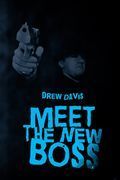 client of mine, Drew Davis, has published his first novel, the gangster-crime story, “Meet the New Boss.” The novel tells the story of Tom Hill, who controls the ramshackle suburb of Randall by running the town’s illegal rackets. Though profits are good, Hill must remain ever vigilant from unwanted media attention and the Organized Crime Task Force’s efforts to take him down. Even more dangerous is tangling with rival bosses, especially when Hill finds himself battling “King" Otis Ledbetter – the most dangerous and powerful boss of all. Hill suddenly finds himself caught up in a world where one misstep can prove fatal. The book can be purchased at Amazon.com.
client of mine, Drew Davis, has published his first novel, the gangster-crime story, “Meet the New Boss.” The novel tells the story of Tom Hill, who controls the ramshackle suburb of Randall by running the town’s illegal rackets. Though profits are good, Hill must remain ever vigilant from unwanted media attention and the Organized Crime Task Force’s efforts to take him down. Even more dangerous is tangling with rival bosses, especially when Hill finds himself battling “King" Otis Ledbetter – the most dangerous and powerful boss of all. Hill suddenly finds himself caught up in a world where one misstep can prove fatal. The book can be purchased at Amazon.com.
Need an editor? Having your book, business document or academic paper proofread or edited before submitting it can prove invaluable. In an economic climate where you face heavy competition, your writing needs a second eye to give you the edge. I can provide that second eye.
Related articles
 Editing client publishes her first fantasy novel
Editing client publishes her first fantasy novel Editing client's sales motivation book published
Editing client's sales motivation book published Editing client publishes his first YA fantasy novel
Editing client publishes his first YA fantasy novel Editing client publishes his first thriller
Editing client publishes his first thriller Editing client releases first in fantasy series
Editing client releases first in fantasy series
March 30, 2013
Five quotations about the business of writing
“Writing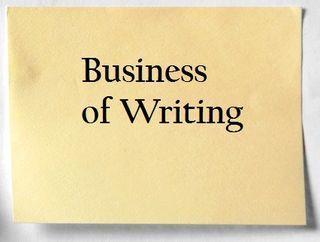 is the only profession where no one considers you ridiculous if you earn no money.” – Jules Renard
is the only profession where no one considers you ridiculous if you earn no money.” – Jules Renard
“There are three reasons for becoming a writer. The first is that you need the money; the second, that you have something to say that you think the world should know; and the third is that you can’t think what to do with the long winter evenings.” – Quentin Crisp
“You have to know how to accept rejection and reject acceptance.” – Ray Bradbury
“Beware of self-indulgence. The romance surrounding the writing profession carries several myths: that one must suffer in order to be creative; that one must be cantankerous and objectionable in order to be bright; that ego is paramount over skill; that one can rise to a level from which one can tell the reader to go to hell. These myths, if believed, can ruin you. If you believe you can make a living as a writer, you already have enough ego.” – David Brin
“It’s a dismally lonely business, writing.” – Toni Cade Bambara
Need an editor? Having your book, business document or academic paper proofread or edited before submitting it can prove invaluable. In an economic climate where you face heavy competition, your writing needs a second eye to give you the edge. I can provide that second eye.
Related articles
 Where to find reviewers for your book
Where to find reviewers for your book Five Great Quotations about the Business of Writing
Five Great Quotations about the Business of Writing Market your book with a free unpublished story
Market your book with a free unpublished story Market your book with endorsements
Market your book with endorsements Improve writing's texture by avoiding repetition
Improve writing's texture by avoiding repetition
March 29, 2013
Market your book by wearing your book title
When 
promoting your book, you always should have a website, send out press releases to bloggers and mainstream media, and arrange book readings/signings to ensure the title is properly promoted. But those aren’t the only things you can do. In fact, they may not be enough. One marketing effort you might want to consider is wearing your book title.
You’ve spent a lot of time coming up with a snappy book title, and if it’s a series you may even have a logo for it. So why not sell user-customized on demand products – a no-so-snappy name for T-shirt, coffee mugs, ink pens and other products – with your logo on it (see the photo at upper right of a T-shirt I sell for promoting my “Hikes with Tykes” guidebooks)? You’ll be surprised at the number of people who, noticing the title of your book on your T-shirt, will say it aloud and strike up a conversation with you about what it means. Now you can pitch your book to them. You might even be surprised who overhears your conversation and what that leads to!
Need an editor? Having your book, business document or academic paper proofread or edited before submitting it can prove invaluable. In an economic climate where you face heavy competition, your writing needs a second eye to give you the edge. I can provide that second eye.
Related articles
 Write a winning blurb for your book's back cover
Write a winning blurb for your book's back cover Why writers need to carry business cards
Why writers need to carry business cards Market your book with endorsements
Market your book with endorsements Promote book with Goodreads author's page
Promote book with Goodreads author's page Why you want reviews written about your book
Why you want reviews written about your book
March 28, 2013
Select array of distribution channels to sell book
Once 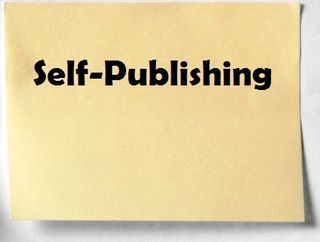 you’ve published your book, most self-publishing houses will ask how you want to distribute it – that is, how do you want to make it available for readers to purchase?
you’ve published your book, most self-publishing houses will ask how you want to distribute it – that is, how do you want to make it available for readers to purchase?
Self-publishing companies offer different packages for distribution at varying costs, with some free and others for a fee. Selecting the majority if not all of these distribution channels is a good idea to maximize your sales.
Among the common distribution channels you should opt to utilize include:
n Self-publishing company’s stores – Most companies give authors a free page on their website to promote their book. If publishing a paperback with CreateSpace, for example, you’ll get a page in CreateSpace’s estore and pages on Amazon.com for sales in the United States and Europe.
n Bookstores and online retailers – Not everyone buys books from Amazon.com, so ensuring Barnes & Noble, independent bookstores, and online booksellers can offer your book for sale is vital. A variation of this is a “direct” program in which your self-publishing company allows select bookstores and online retailers to sell your book after purchasing it at wholesale prices; other book sellers, to earn money, have to mark up the price beyond what you set.
n Libraries and academic institutions – This is key if you want your book available for others to check out at a public or school library (such as your hometown!) or to be used as a textbook. Usually you must pay extra for this.
Availability of distribution channels sometimes hinges on your ISBN. If you’ve purchased a legitimate ISBN from Bowker or through the self-publishing house, all of the various channels should be open to you. However, purchasing an ISBN from another company while helping get your book published often is less than ideal for distributing books.
In addition, you may have to agree to change the price of your book or accept a lower royalty for it to be distributed in some nations, such as India.
Need an editor? Having your book, business document or academic paper proofread or edited before submitting it can prove invaluable. In an economic climate where you face heavy competition, your writing needs a second eye to give you the edge. I can provide that second eye.
Related articles
 Design a back cover that sells your book
Design a back cover that sells your book Why you want reviews written about your book
Why you want reviews written about your book
March 27, 2013
Easy to understand comma rules
There  are a lot of great writers out there but only so many novels and short stories that book companies can publish. To prevent your piece from having a competitive disadvantage, you’ll want to ensure it is as publishable as possible when the editor picks it up. That includes enduring your piece follows all of those punctuation and capitalization rules that back in grammar school that led us to many a daydream about being on an exotic alien world or hunting dinosaurs in the Jurassic.
are a lot of great writers out there but only so many novels and short stories that book companies can publish. To prevent your piece from having a competitive disadvantage, you’ll want to ensure it is as publishable as possible when the editor picks it up. That includes enduring your piece follows all of those punctuation and capitalization rules that back in grammar school that led us to many a daydream about being on an exotic alien world or hunting dinosaurs in the Jurassic.
Not following these rules instantly makes your story more difficult to read. And despite a great plot line and descriptions, your editor will be thinking of how much time he’s going to have to spend correcting your work – time he doesn’t really have. When there’s another piece in a pile of submissions that probably is as good as yours, he’s likely to set aside your story in favor of one that won’t overburden him.
During my editing experience, I’ve seen the same set of capitalization and punctuation errors repeated in many pieces. Here’s a list of them regarding commas.
Attribution
If a quotation that is a single sentence is split by attribution, use a comma after the attribution.
n RIGHT: “Luke of Tatooine,” called Obi-wan Kenobi, “use the force!”
n WRONG: “Luke of Tatooine,” called Obi-wan Kenobi.“Use the force!”
n RIGHT:“Luke of Tatooine, use the force!” said Obi-wan Kenobi.“Only then can you defeat Darth Vader!”
n WRONG: “Luke of Tatooine, use the force!” said Obi-wan Kenobi, “only then can you defeat Darth Vader!”
Before words of address in quotations/dialogue, place a comma before the name of the person being addressed. This often helps separate the name of who is being addressed from a preposition that comes before it.
n RIGHT: “We don’t know where they came from, Mr. Spock.”
n WRONG: “We don’t know where they came from Mr. Spock.”
If the attribution comes before the quotation, set off the attribution with a comma.
n RIGHT: Han Solo grinned then added, “You’re surrounded.”
n WRONG: Han Solo grinned then added “You’re surrounded.”
Compound sentence
Use a comma before the conjunction (and, but, or) if a complete sentence can be made out of the words on either side of the conjunction.
n RIGHT: The elder man’s face paled, and at last his breathing froze.
n WRONG: The elder man’s face paled and at last his breathing froze.
n RIGHT: The elder man’s face paled and then stiffened.
n WRONG: The elder man’s face paled, and then stiffened.
Too
Generally the word “too” is set off with commas.
n RIGHT: Christopher Pike was captain of the USS Enterprise, too.
n RIGHT: Christopher Pike, too, was captain of the USS Enterprise.
n WRONG: Christopher Pike was captain of the USS Enterprise too.
n WRONG: Christopher Pike too was captain of the USS Enterprise.
Who
Generally, phrases beginning with “who” are set off with commas when they appear after the name of the person to “who” refers.
n RIGHT: He thought of that day at the spaceport when he’d said goodbye to his father, who was returning to Star Service duty.
n WRONG: He thought of that day at the spaceport when he’d said goodbye to his father who was returning to Star Service duty.
Need an editor? Having your book, business document or academic paper proofread or edited before submitting it can prove invaluable. In an economic climate where you face heavy competition, your writing needs a second eye to give you the edge. I can provide that second eye.
Related articles
 Don't lose sleep over this confusing comma rule
Don't lose sleep over this confusing comma rule Improve writing's texture by avoiding repetition
Improve writing's texture by avoiding repetition



